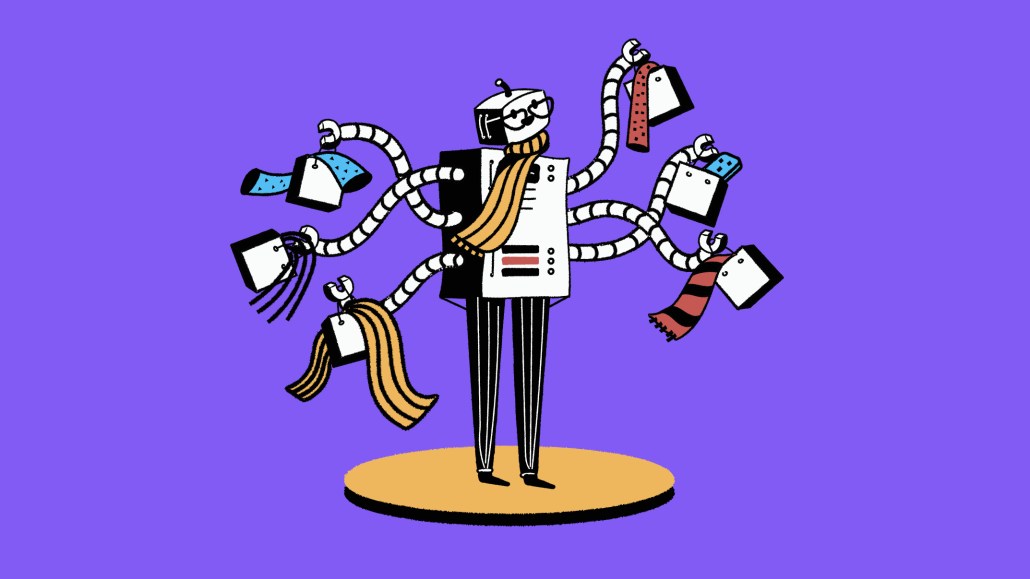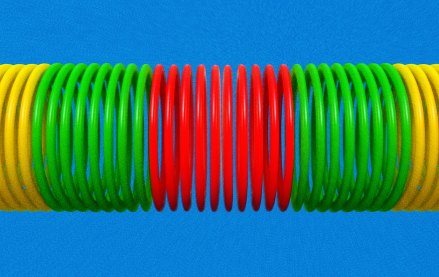Media Buying Briefing: The good, the bad and the ugly of 2022 for media agencies

This Media Buying Briefing covers the latest in agency news and media buying for Digiday+ members and is distributed over email every Monday at 10 a.m. ET. More from the series →
As 2022 comes to a close, a look back through the year reveals a most confusing time for the media agency world, holding differing fortunes as they try to get back to normalcy, whatever that is. The holding companies are feverishly trying to update their offerings and break down silos in an effort to become more nimble, while independents find their niches and exploit them to the best of their abilities.
A few irrefutable trends emerged over this past year that merit revisiting.
The continued rise of commerce media
Judging from the number of agencies and holding companies that launched dedicated e-commerce and/or retail media divisions, it’s safe to say that commerce media is the hottest growth factor media agencies enjoyed in 2022. Just last week UM updated its UM Shopper unit into a more broadly focused UM Commerce — a tacit recognition that the industry’s moved way past just looking to Amazon.
And why wouldn’t they? Commerce media is exploding and is expected to keep up hockey-stick growth for years to come. In the last year alone, so many more retailers opened up retail media network offerings, to the point where Acxiom’s CEO declared to Digiday that everything’s an ad network these days.
Figuring out the meh-taverse
It’s still too soon to call 2022 the year of the metaverse. But this year, media and creative agencies continued to invest time and money into developing virtual and augmented reality, experimenting with immersive content and exploring other decentralized technologies. Some of those efforts have led to more education and testing. Research reminds us that most consumers still have no clue what Web3 means. And that means while clients often are intrigued by how to establish a brand presence or engage people in the virtual world, they are not certain on the best way to play in the metaverse.
Gearing up for the Consumer Electronics Show in January, Dentsu built its first metaverse campus in partnership with Microsoft and productivity platform HeadOffice.Space. But sports and gaming are also major potential expansions in the metaverse, which already has applications from esports to AR and VR platforms. This year, Stagwell launched two different augmented reality apps with the Los Angeles Rams and Minnesota Twins for fans in the stadium and at home with live content and interactive games.
Finding the most flexible media options
The darkening economic clouds — don’t say recession since it’s not formally been declared — have led to many agencies to seek to place their clients’ dollars into media that have greater flexibility. In other words, places where an agency can easily shift, or pull back, spend. That continuing trend picked up in 2022, and the main beneficiaries have been digital media — from social to connected TV (more on that later) to digital out-of-home.
It meant that media agencies lessened their reliance on linear TV, which has stricter policies about moving or cancelling inventory orders. The message being sent by media agencies to television providers seems pretty clear: become more flexible or continue to lose more market share to digital alternatives.
Is there just too much CTV?
The rise in the amount of premium inventory that entered the connected TV marketplace should by all accounts have created a boom for video investment folks. Netflix and Disney+ launched ad-supported versions of their streaming options in fourth quarter, while Apple quietly started putting the pieces together for running ads on its Apple TV service.
But there remains too much confusion and potential fraud, with numerous SSPs and DSPs representing overlapping inventory. And to make matters worse, Netflix has already run into a makegood situation, giving advertisers back some ad dollars due to viewership shortfalls.
Nevertheless, audiences continue to, well, flow, to this relatively nascent version of TV. How an economic downturn will affect the number of subscribers to numerous streaming services remains to be seen.
Stemming the outgoing talent tide
Although the Great Resignation began earlier in the pandemic, the constant flow of people leaving the agency world for other opportunities (or just to do a whole lifestyle change) didn’t abate much in 2022. Agencies of all stripes rolled out training programs and other efforts to stave off deeper losses.
Ironically, the one thing working in agencies’ favor is that the tech world is laying off thousands of workers, making that jump from agency-land to those once-greener pastures far less alluring today.
Color by numbers
Do repetitive ads make people tune out? Marketing platform System1 did an analysis testing the effectiveness of ads dating back to 2020, and it showed that the age of an ad made no difference to its performance. Impactful ads stayed impactful. By analyzing and ranking some 100 ads in the U.S. and the U.K., System1 tried to prove that ad “wear out” is more of a myth. — AS
More on the results:
- The study found there was little evidence to show that ads “wear out” after a period of time. In particular, ads that were tested up to 19 years after first airing tested similarly compared to ads tested when they first aired.
- Holiday ads are known to perform better. When studying the U.S. and the U.K. markets, the Christmas ads scored better on average than ads during the rest of the year even though they tend to run for a shorter period.
- U.S. ads run on average longer than in the U.K., and the higher the ad scores in effectiveness, the longer they run (on a scale of 1 to 6). The U.S. ads scoring a 5 saw a 25% longer lifespan on average compared to the lowest-rated ads.
- Research found the opposite was true in the U.K. Ad lifespan in general is lower than the U.S., but the lowest-rated ads are shown for much longer than the highly-rated commercials. A 5-score ad in the U.K. aired for 71 days on average, compared to 95 days for 1-star ads.
Takeoff & landing
- Havas Media Group retained global media AOR duties for Innocean, which comprises auto brands Hyundai, Kia and Genesis, following a review.
- Dentsu X in the U.S. won media duties for multiple dental brands under the TAG – The Aspen Group umbrella. Harmelin Media was reportedly the incumbent, and other agencies reportedly pitching included UM, OMD and Assembly.
- Horizon Media’s new sports entity Horizon Sports & Experiences, picked up its first client, NBA Entertainment (the league’s production and marketing arm), for which it will consult to help expand the league’s global reach.
- Digital agency Dep’t acquired commerce agency Melon, which will now be known as Melon/Dep’t.
- Personnel moves: Purchase data platform Affinity Solutions hired Damian Garbaccio as its first chief business and marketing officer … Programmatic firm TripleLift promoted Sonja Kristiansen as its chief business officer, up from svp of global platform partnerships.
Direct quote
“It’s really hard to have two major holding group agency CEOs get honored in one year. Sometimes, quite honestly, they don’t want to be nominated because they think they still have another five or 10 years left in their career. It’s possible that we wanted to nominate [inductee Omnicom CEO] John Wren a few years ago and for whatever reason, he was like, ‘I’m not ready to be considered for that.’ That has happened. We’ve been talking about [inductee] Antonio Lucio for a couple of years, and he really wanted to wait to be considered until he was no longer a global CMO.”
— Former Facebook executive and new Disney board member Carolyn Everson, who chaired the council of judges selecting the AAF’s inductees to its Advertising Hall of Fame. Besides Wren and Lucio, other inductees include Renetta McCann, Louis Carr, Cathie Black, Aaron Walton and Raul Alarcón, along with corporate inductee Unilever.
Speed reading
- As the Elon Musk era of Twitter continues apace, Digiday’s platforms reporter Krystal Scanlon keeps breaking news — the latest twist being Musk’s proposed plan to force users to share data with advertisers or pay to avoid it.
- Media agency reporter Antoinette Siu explained the findings in Accenture Song’s latest report on the changing nature of brand loyalty.
- And I covered the latest move toward widespread adoption of attention metrics, as the first sell-side platform, PubMatic, cut a deal to incorporate Adelaide’s AU metric into its offerings.
More in Media Buying

Ad Tech Briefing: Big Tech won 2025 (even when it lost)
How AI, commerce media and scale reshaped ad tech in 2025 to the benefit of Big Tech.

How brands shifted marketing and media strategies through year of tariffs
Marketers share how they navigated the maze of tariffs and regulatory changes this year.

Media Buying Briefing: Omnicom Media execs begin their pitch outreach ahead of an expected new-business glut
Omnicom’s acquisition of IPG is only a few weeks old, but its combined offer to the market will soon be put to the test as it meets with consultants.







